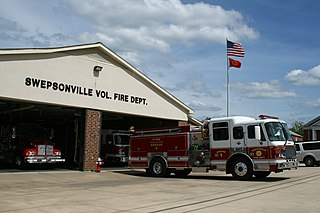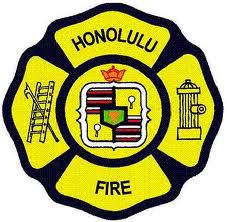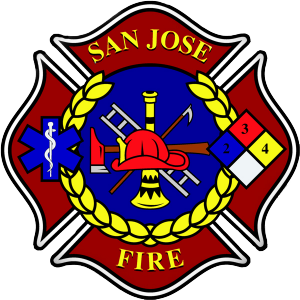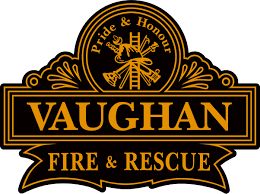
A firefighter is a rescuer extensively trained in firefighting, primarily to extinguish hazardous fires that threaten life, property, and the environment as well as to rescue people and in some cases or jurisdictions also animals from dangerous situations. Male firefighters are sometimes referred to colloquially by the historical term fireman although the use of this terminology is officially discouraged.

The New York City Fire Department, officially the Fire Department of the City of New York (FDNY), is a department of the government of New York City that provides fire protection, technical rescue services, primary response to biological, chemical, and radioactive hazards, and emergency medical services responses to the five boroughs of New York City.

A volunteer fire department (VFD) is a fire department consisting of volunteers who perform fire suppression and other related emergency services for a local jurisdiction. Volunteer and retained firefighters are expected to be on call to respond to emergency calls for long periods of time, and are summoned to the fire station when their services are needed. They are also expected to attend other non-emergency duties as well.

The Honolulu Fire Department (HFD) provides fire protection and first responder emergency medical services to the City & County of Honolulu, Hawaii, United States, under the jurisdiction of the Mayor of Honolulu. Founded on December 27, 1850 by Kamehameha III and Alexander Cartwright, the Honolulu Fire Department serves and protects the entire island of O'ahu, covering over 600 square miles (1,600 km2) of territory, home to more than 880,000 residents and over 4 million annual visitors.

The Chicago Fire Department (CFD) provides fire suppression, rescue services and emergency medical response services to the city of Chicago, Illinois, United States, under the jurisdiction of the Mayor of Chicago. The Chicago Fire Department is the third largest municipal fire department in the United States after the New York City Fire Department (FDNY) and Cal Fire, as measured by sworn personnel. It is also one of the oldest major organized fire departments in the nation.

Firefighting is the act of attempting to prevent the spread of and extinguish significant unwanted fires in buildings, vehicles, woodlands, etc. A firefighter suppresses fires to protect lives, property and the environment.

Fire safety is the set of practices intended to reduce the destruction caused by fire. Fire safety measures include those that are intended to prevent ignition of an uncontrolled fire, and those that are used to limit the development and effects of a fire after it starts.
Firefighting jargon includes a diverse lexicon of both common and idiosyncratic terms. One problem that exists in trying to create a list such as this is that much of the terminology used by a particular department is specifically defined in their particular standing operating procedures, such that two departments may have completely different terms for the same thing. For example, depending on whom one asks, a safety team may be referred to as a standby, a RIT or RIG or RIC, or a FAST. Furthermore, a department may change a definition within its SOP, such that one year it may be RIT, and the next RIG or RIC.

A fire station is a structure or other area for storing firefighting apparatus such as fire engines and related vehicles, personal protective equipment, fire hoses and other specialized equipment. Fire stations frequently contain working and living space for the firefighters and support staff.
The Arkansas Fire Training Academy is the official fire training institution for the state of Arkansas. The main campus is located on the grounds of Southern Arkansas University Tech in Camden, Arkansas, alongside the Arkansas Law Enforcement Training Academy.
Fire prevention is a function of many fire departments. The goal of fire prevention is to educate the public to take precautions to prevent potentially harmful fires, and be educated about surviving them. It is a proactive method of preventing emergencies and reducing the damage caused by them. Many fire departments have one or more Fire Prevention Officers, which may also be a routine duty of firefighters.

Fire protection is the study and practice of mitigating the unwanted effects of potentially destructive fires. It involves the study of the behaviour, compartmentalisation, suppression and investigation of fire and its related emergencies, as well as the research and development, production, testing and application of mitigating systems. In structures, be they land-based, offshore or even ships, the owners and operators are responsible to maintain their facilities in accordance with a design-basis that is rooted in laws, including the local building code and fire code, which are enforced by the Authority Having Jurisdiction.

Fort Lauderdale Fire-Rescue Department is the fire and rescue service provider for the City of Fort Lauderdale, Florida, as well as the cities of Wilton Manors and Lazy Lake through service contracts. Additionally the FLFRD is responsible for ARFF at Fort Lauderdale Executive Airport. In 2013, the department responded to 44,387 calls for service.
Essentials of Fire Fighting is a fire service training manual produced by Fire Protection Publications (FPP) and the International Fire Service Training Association (IFSTA). Fire Protection Publications is a department of Oklahoma State University College of Engineering, Architecture, and Technology (CEAT) in Stillwater, Oklahoma. This manual is used by fire service training agencies and departments around the world to train personnel to become firefighters. The Essentials of Fire Fighting is the required training manual used in countless local fire departments and state/provincial training agencies in every region of the United States and Canada. Since the release of the first edition of this manual in 1978, more than 2.5 million copies of the Essentials of Fire Fighting have been distributed to the fire service.

The Boston Fire Department provides fire protection and first responder emergency medical services to the city of Boston, Massachusetts. In addition to fire protection, the department responds to a variety of emergencies such as medical emergencies, motor vehicle accidents, hazardous material spills, electrical hazards, floods, and construction accidents.
A combination fire department is a type of fire department which consists of both career and volunteer firefighters. In the United States, combination fire departments are typically tax-supported in some fashion, and generally have an annual call volume larger than purely volunteer departments but less than career departments.

The Fort Worth Fire Department provides fire protection and first responder emergency medical services to the city of Fort Worth, Texas.

The San Jose Fire Department (SJFD) provides fire protection, rescue and emergency medical services to the city of San Jose, California, United States. The San Jose Fire Department protects the third largest city in California and the tenth largest city in the nation.

The Santa Clara County Fire Department (SCCFD) provides fire protection and emergency medical services to the county of Santa Clara, California. Established in 1947, the SCCFD is responsible for the unincorporated areas of Santa Clara County as well as the communities of Campbell, Cupertino, Los Altos, Los Altos Hills, Los Gatos, Monte Sereno, and Saratoga.

Vaughan Fire and Rescue Services (VFRS) provides fire protection, technical rescue services, hazardous materials response, and first responder emergency medical assistance to the city of Vaughan, Ontario. It operates 10 fire stations and coordinates with other fire departments in York Region and the Greater Toronto Area. VFRS received a 100 per cent satisfaction rating in the City of Vaughan’s 2018 Citizen Survey.














